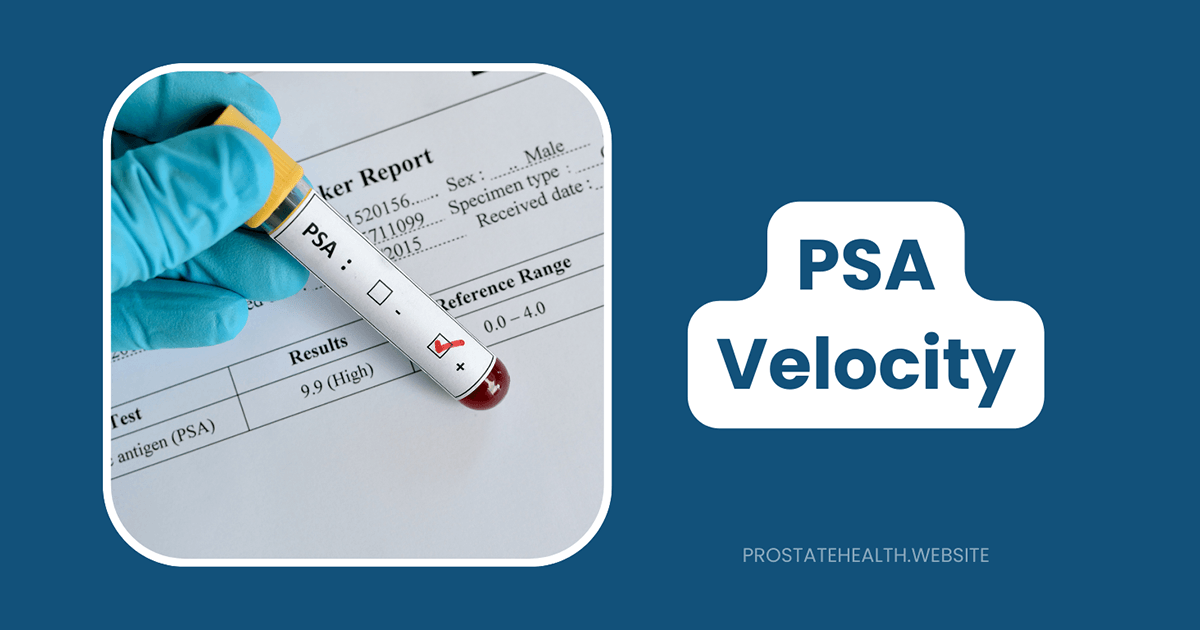At-Home Screening Options: Are They Reliable?

When I noticed at-home PSA test kits prominently displayed at my local pharmacy last month, I was intrigued. The packaging promised “fast results,” “clinical accuracy,” and “peace of mind”—all from the comfort of home, without the need for a doctor’s appointment. As someone who advocates for prostate health awareness, I wondered: Could these convenient tests be the answer to increasing screening rates among men reluctant to visit their doctors?
The appeal is undeniable. At-home testing offers privacy, convenience, and accessibility—particularly valuable for men in rural areas, those without regular healthcare, or individuals simply uncomfortable discussing prostate health with a physician. But as I investigated further, I discovered that the reality of at-home prostate screening is far more nuanced than the marketing suggests.
In this comprehensive guide, we’ll explore the various at-home prostate screening options available in 2025, examine their reliability compared to clinical testing, and provide guidance on how to make informed decisions about these increasingly popular products.
The Landscape of At-Home Prostate Screening
The market for at-home prostate screening has expanded significantly in recent years, with several types of tests now available:
Rapid PSA Test Kits
- How they work: Similar to COVID-19 lateral flow tests, these kits require a small blood sample (usually from a finger prick) that’s applied to a test cassette
- Result time: 5-10 minutes
- Cost: $15-25 (£13-20)
- Interpretation: Typically provide a simple “positive” or “negative” result based on whether PSA levels exceed a predetermined threshold (usually 4 ng/mL)
Mail-In Laboratory PSA Tests
- How they work: Users collect a blood sample at home and mail it to a laboratory for analysis
- Result time: 2-5 business days
- Cost: $40-120 (£30-90)
- Interpretation: Provide a specific PSA measurement, similar to clinical tests
Emerging Alternatives
- Urine-based tests: Newer options like MyProstateScore 2.0 (MPS2) analyze genetic markers in urine
- Saliva tests: Genetic screening tests that assess multiple genetic variants associated with prostate cancer risk
- Microbiome tests: Emerging technology that examines bacterial signatures associated with prostate health
Dr. William Catalona, a pioneering researcher in prostate cancer screening, notes: “The landscape of at-home testing has evolved dramatically. While traditional PSA testing remains the foundation, we’re seeing innovative approaches that may eventually transform how we screen for prostate cancer.”
The Reliability Question: What Research Reveals
The critical question for any man considering these tests is simple: Can I trust the results? Recent investigations and studies provide important insights.
Rapid PSA Test Reliability Concerns
A 2025 investigation by the BBC examined five different rapid at-home PSA tests using the same blood sample and found alarming inconsistencies:
- One test failed to produce any result
- Three tests returned negative results
- One test incorrectly indicated a high PSA level
This variability raises serious concerns about the reliability of rapid test kits. In the same investigation, a rapid test indicated a PSA level above 4.0 ng/mL, while a laboratory test from the same day showed a much lower level of 0.27 ng/mL—a significant discrepancy that could cause unnecessary anxiety.
Dr. Sarah Johnson, a urologist at Memorial Sloan Kettering Cancer Center, explains: “Rapid PSA tests face inherent challenges in achieving the precision of laboratory testing. The technology simply isn’t comparable to the sophisticated equipment used in clinical settings.”
Mail-In Laboratory Test Reliability
Mail-in tests that send samples to laboratories generally offer better reliability than rapid tests, but still face challenges:
- Sample quality issues: Improper collection or storage can affect results
- Shipping conditions: Temperature fluctuations during transit may impact sample integrity
- Laboratory variability: Different labs may use different testing methodologies and reference ranges
A 2024 study published in the Journal of Urology found that mail-in PSA tests showed 85-90% concordance with clinical testing when samples were properly collected and promptly shipped—better than rapid tests but still leaving room for error.
Emerging Alternative Test Reliability
Newer testing approaches show promise but have varying levels of validation:
- MyProstateScore 2.0: A 2025 study from Vanderbilt and the University of Michigan demonstrated that this urine test could help patients with elevated PSA levels avoid 34-53% of unnecessary biopsies, with a false negative rate of 7.6% for clinically significant cancers
- Saliva-based genetic tests: Research published in the New England Journal of Medicine in 2025 found that a saliva test analyzing 130 genetic variants identified 40% of men with high risk scores as having prostate cancer, compared to only 25% of men with high PSA levels
Understanding the Limitations
Beyond reliability concerns, at-home prostate screening tests have several important limitations that men should understand:
1. They’re Not Diagnostic
Perhaps the most critical limitation is that these tests—even when accurate—cannot diagnose prostate cancer. They can only indicate potential issues that require further evaluation.
Dr. Peter Carroll, Chair of Urology at UCSF, emphasizes: “A PSA test, whether performed in a clinical setting or at home, is not a cancer test. It’s a screening tool that may suggest the need for additional testing. Many conditions besides cancer can elevate PSA levels.”
2. Limited Context and Interpretation
At-home tests typically lack the contextual interpretation that healthcare providers offer:
- Age-specific reference ranges: PSA levels naturally increase with age, but many at-home tests use a single cutoff value
- PSA velocity: The rate of change in PSA over time is often more informative than a single measurement
- Individual risk factors: Family history, race, and other factors affect how PSA results should be interpreted
3. Potential for User Error
The accuracy of at-home tests depends significantly on proper technique:
- Blood collection challenges: Many users struggle with finger-prick sampling
- Test timing: Some activities (exercise, ejaculation) can temporarily elevate PSA
- Instruction complexity: A review of self-test instructions found them generally inadequate for average users
4. False Positives and Negatives
All PSA tests—clinical or at-home—have inherent limitations:
- False positives: Conditions like benign prostatic hyperplasia (BPH), prostatitis, and urinary tract infections can elevate PSA
- False negatives: Some aggressive prostate cancers don’t produce high PSA levels
Dr. Stacy Loeb, a urologic oncologist at NYU Langone Health, notes: “The PSA test’s limitations exist regardless of where it’s performed. But in a clinical setting, these limitations are mitigated by professional interpretation and the context of a complete health assessment.”
When At-Home Testing Makes Sense
Despite these limitations, at-home testing may be appropriate in certain situations:
For Men Without Regular Healthcare Access
- Those living in remote areas with limited healthcare facilities
- Men without health insurance or regular primary care
- Individuals facing significant barriers to clinical care
As a Preliminary Step
- Men who experience extreme anxiety about medical visits
- Those who want to monitor their PSA between clinical visits
- Individuals who might otherwise avoid screening entirely
For Specific Populations
- Men with family history who want more frequent monitoring than clinically recommended
- Those participating in telehealth programs that incorporate at-home testing
- Individuals in active surveillance programs for low-risk prostate cancer
Dr. Oliver Sartor, Medical Director of Tulane Cancer Center, suggests: “At-home testing can serve as a bridge to clinical care for men who might otherwise avoid screening altogether. The key is ensuring that abnormal results lead to proper medical follow-up.”
Making At-Home Testing More Reliable
If you choose to use at-home prostate screening tests, several strategies can help maximize reliability:
1. Choose the Right Type of Test
- Mail-in laboratory tests are generally more reliable than rapid tests
- Look for FDA-cleared or CE-marked products that have undergone regulatory review
- Check for CLIA certification for mail-in laboratory tests
2. Follow Instructions Meticulously
- Read all instructions before beginning
- Follow sample collection protocols exactly
- Adhere to timing requirements precisely
3. Consider Test Timing
- Avoid testing after ejaculation (wait 24-48 hours)
- Don’t test after vigorous exercise
- Avoid testing during or shortly after urinary tract infections or prostatitis
4. Use Multiple Data Points
- Consider periodic testing rather than relying on a single result
- Track results over time to establish personal baselines
- Use at-home testing as a complement to, not replacement for, clinical care
Promising Developments in At-Home Screening
While current at-home PSA tests have significant limitations, emerging technologies show promise for more reliable home-based screening:
MyProstateScore 2.0 (MPS2)
This urine test, developed by researchers at Vanderbilt and the University of Michigan, represents a significant advancement:
- Analyzes 18 genes associated with prostate cancer
- Can be performed at home without requiring a digital rectal exam
- Helps identify which men with elevated PSA truly need further evaluation
- Available with a clinician’s order and covered by Medicare and most insurance plans
Dr. Daniel Lin, Chief of Urologic Oncology at the University of Washington, notes: “The MPS2 test represents a new generation of at-home screening that goes beyond PSA. By analyzing multiple genetic markers, it provides more specific information about cancer risk.”
Saliva-Based Genetic Testing
Genetic risk assessment through saliva testing is showing promising results:
- Analyzes 130+ genetic variants associated with prostate cancer
- Provides a polygenic risk score that predicts lifetime risk
- May identify aggressive cancers more effectively than PSA alone
- Particularly valuable for men with family history of prostate cancer
A 2025 study found that this approach identified a higher proportion of aggressive cancers (55.1%) compared to PSA testing (35.5%), suggesting it may help address one of PSA’s key limitations.
The Expert Consensus: A Balanced Approach
Medical organizations and prostate cancer experts generally recommend a balanced approach to at-home testing:
American Urological Association (AUA)
- Acknowledges the potential value of at-home testing for increasing screening rates
- Emphasizes that results should be confirmed with clinical testing
- Recommends against making treatment decisions based solely on at-home results
American Cancer Society
- Recognizes that at-home testing may reach men who avoid clinical screening
- Stresses the importance of proper result interpretation by healthcare professionals
- Recommends clinical follow-up for abnormal results
Prostate Cancer UK
- Expresses concerns about the reliability of rapid at-home tests
- Recommends laboratory-based testing over rapid tests if choosing at-home options
- Emphasizes the importance of discussing results with healthcare providers
Dr. James Eastham of Memorial Sloan Kettering Cancer Center summarizes the consensus view: “At-home testing can play a role in prostate cancer screening, particularly for reaching underserved populations. However, these tests should be viewed as a first step that requires clinical follow-up, not as a replacement for professional healthcare.”
Making an Informed Decision: A Practical Guide
If you’re considering at-home prostate screening, here’s a practical framework for making an informed decision:
Step 1: Assess Your Risk Profile
- Age: Prostate cancer risk increases significantly after age 50
- Family history: Having first-degree relatives with prostate cancer increases risk
- Race: African American men have higher risk and may benefit from earlier screening
- Genetic factors: Known genetic mutations (BRCA1/2, Lynch syndrome) increase risk
Step 2: Consider Your Healthcare Access
- Do you have regular access to a primary care physician?
- Does your insurance cover clinical PSA testing?
- Are there barriers preventing you from seeking clinical care?
Step 3: Choose the Right Test Type
- For monitoring between clinical visits: Mail-in laboratory tests offer better reliability
- For initial screening with limited resources: Rapid tests, despite limitations, may be better than no testing
- For men with elevated PSA: Consider newer options like MPS2 that provide additional information
Step 4: Have a Follow-Up Plan
- Know in advance how you’ll respond to different results
- Identify a healthcare provider who can provide clinical follow-up if needed
- Understand what additional testing might be necessary based on results
Dr. Peter Carroll advises: “The most important aspect of at-home testing isn’t the test itself—it’s having a plan for what comes next. An abnormal result should always lead to a conversation with a healthcare provider.”
Real-World Perspectives
To provide a more complete picture, consider these perspectives from both patients and physicians:
Patient Perspective: Robert, 62
“I was reluctant to see a doctor about prostate screening, so I tried an at-home test first. My PSA was elevated, which prompted me to finally make an appointment. The clinical test confirmed the high PSA, and further testing found an early-stage cancer. While the at-home test wasn’t perfect, it got me into the healthcare system when I might have continued avoiding it.”
Patient Perspective: James, 58
“I used a rapid test that showed normal results, which gave me peace of mind. Six months later, I mentioned this to my doctor, who suggested a clinical PSA test anyway. That test showed a borderline elevated level that led to further evaluation. The at-home test had given me false reassurance, which could have delayed my diagnosis.”
Physician Perspective: Dr. Sarah Johnson, Urologist
“I’ve seen both scenarios—patients who benefited from at-home testing that brought them to medical attention, and those who were falsely reassured by negative results. My advice is to use these tests as a supplement to, not a replacement for, clinical care. And always discuss the results with a healthcare provider.”
Physician Perspective: Dr. Michael Chen, Primary Care Physician
“For my patients who refuse clinical PSA testing due to anxiety or other concerns, I sometimes suggest at-home testing as a first step. But I emphasize that these tests have limitations and that abnormal results—or ongoing concerns despite normal results—warrant clinical follow-up.”
The Future of At-Home Prostate Screening
The landscape of at-home prostate screening continues to evolve rapidly, with several promising developments on the horizon:
Integration with Telehealth
- Virtual consultations to discuss at-home test results
- Remote ordering of more sophisticated tests by healthcare providers
- Digital platforms that help interpret results in context
Artificial Intelligence Enhancement
- AI algorithms that improve interpretation of at-home test results
- Machine learning models that incorporate multiple risk factors
- Smart devices that reduce user error in sample collection
Multi-Marker Approaches
- Tests that combine PSA with other protein biomarkers
- Comprehensive genetic risk assessment
- Microbiome analysis combined with traditional markers
Dr. Felix Feng, Vice Chair of Clinical Research in the Department of Radiation Oncology at UCSF, predicts: “Within the next five years, I believe we’ll see at-home screening options that rival clinical testing in accuracy. The combination of advanced biomarkers, improved sample collection methods, and AI-assisted interpretation will transform this field.”
Conclusion: Finding the Right Balance
At-home prostate screening tests offer a promising avenue for increasing screening rates and reaching men who might otherwise avoid testing. However, their current limitations—particularly for rapid tests—mean they should be approached with realistic expectations and a clear understanding of their proper role.
The most balanced approach views at-home testing not as a replacement for clinical care but as a potential first step or supplement that can help men engage with the healthcare system. When used appropriately and followed by proper medical consultation, these tests can contribute to earlier detection of prostate cancer and potentially better outcomes.
As you consider your prostate health screening options, remember that the most reliable approach combines the convenience of at-home testing with the expertise and comprehensive care that only healthcare professionals can provide. The goal isn’t just to get tested—it’s to get the right care based on accurate information and professional guidance.
References:






